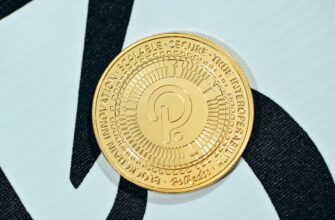Understanding the distribution of XRP tokens is crucial for investors and crypto enthusiasts alike. An XRP ownership chart visually maps how the world’s seventh-largest cryptocurrency is allocated among holders, revealing insights about market stability, decentralization, and potential price influences. This analysis explores key players, Ripple Labs’ role, and how ownership patterns impact the XRP ecosystem. With over 99 billion tokens in circulation, tracking ownership helps navigate this dynamic digital asset.
What Is an XRP Ownership Chart?
An XRP ownership chart is a graphical representation (like a pie chart or bar graph) showing the percentage of XRP tokens held by different entities. It categorizes holders into groups such as:
- Ripple Labs and its executives
- Cryptocurrency exchanges
- Institutional investors
- Retail holders
- Escrow accounts
These charts use blockchain data to display real-time or historical snapshots, highlighting concentration risks and decentralization trends.
Why XRP Ownership Distribution Matters
Ownership transparency directly impacts XRP’s market dynamics. A highly concentrated distribution can signal vulnerability to price manipulation, while broad dispersion suggests healthier decentralization. Key implications include:
- Market Stability: Large “whale” holders moving funds can trigger volatility.
- Regulatory Perception: The SEC lawsuit highlighted concerns over Ripple’s influence via token holdings.
- Investor Confidence: Balanced ownership fosters trust in XRP’s long-term viability.
- Network Security: Distributed holdings reduce single-point-of-failure risks.
Major Players in XRP Ownership
Current ownership data reveals distinct stakeholder segments:
- Ripple Labs: Holds ~5-6% of circulating XRP for operations, with 46 billion tokens in escrow (released gradually until 2027).
- Founders: Chris Larsen and Jed McCaleb collectively owned ~20% initially, though McCaleb sold most through structured plans.
- Exchanges:
- Retail Investors: Millions of small holders control ~30% of supply.
- Institutions: Entities like Grayscale’s XRP Trust hold significant positions.
Binance, Bitstamp, and others hold ~12% for liquidity and user wallets.
How to Interpret XRP Ownership Charts
Reading these charts involves three key steps:
- Identify Concentration: Check the top 10 holders’ combined percentage. If exceeding 40%, monitor for sell-off risks.
- Track Escrow Movements: Watch monthly releases (1 billion XRP) from Ripple’s escrow, as unsold tokens are relocked.
- Analyze Trends: Use tools like XRPScan or Bithomp to compare historical distributions and spot shifts.
Ripple Labs’ Strategic Role in XRP Ownership
Ripple manages XRP’s supply through a deliberate escrow system, locking 55 billion tokens in 2017 to prevent market flooding. Monthly releases fund operations and partnerships, but unsold XRP returns to escrow. This mechanism:
- Controls inflation by limiting new supply
- Funds ecosystem development (e.g., RippleNet integrations)
- Addresses centralization criticisms by reducing Ripple’s direct holdings over time
How Ownership Affects XRP’s Market Performance
Ownership patterns create tangible market effects:
- Escrow releases can temporarily increase selling pressure if Ripple offloads tokens.
- Exchange inflows/outflows from large holders often precede price swings.
- Regulatory news (e.g., SEC rulings) triggers ownership reshuffling as institutions adjust positions.
Historically, XRP’s price correlates with Ripple’s escrow management and adoption milestones rather than Bitcoin’s movements.
Frequently Asked Questions (FAQ)
Q: How much XRP does Ripple currently own?
A: Ripple holds approximately 5.5 billion XRP (~5% of supply) outside escrow, with 46 billion locked in escrow for controlled release.
Q: Is XRP ownership becoming more decentralized?
A: Yes. Ripple’s share has decreased from 60% (2017) to under 10% today, while retail and institutional holdings grow.
Q: Where can I view live XRP ownership charts?
A> Use blockchain explorers like XRPScan or platforms such as CoinCarp for real-time distribution data.
Q: Do large XRP holders manipulate prices?
A> While possible, Ripple’s escrow limits sudden dumps. Exchange monitoring tools help detect unusual whale activity.
Q: How does XRP ownership compare to Bitcoin or Ethereum?
A> XRP has higher initial concentration (Ripple/founders), but now rivals BTC/ETH in top-holder dispersion (~4% vs. BTC’s ~2% top holder share).
Q: Can retail investors access ownership data?
A> Absolutely. All XRP transactions are public on the XRP Ledger, enabling transparent tracking via explorer tools.
In summary, XRP ownership charts are vital tools for assessing the token’s health and trajectory. While Ripple’s escrow strategy mitigates supply risks, investors should monitor distribution shifts through reliable blockchain analytics. As adoption grows, balanced ownership could strengthen XRP’s position as a bridge currency in global finance.








